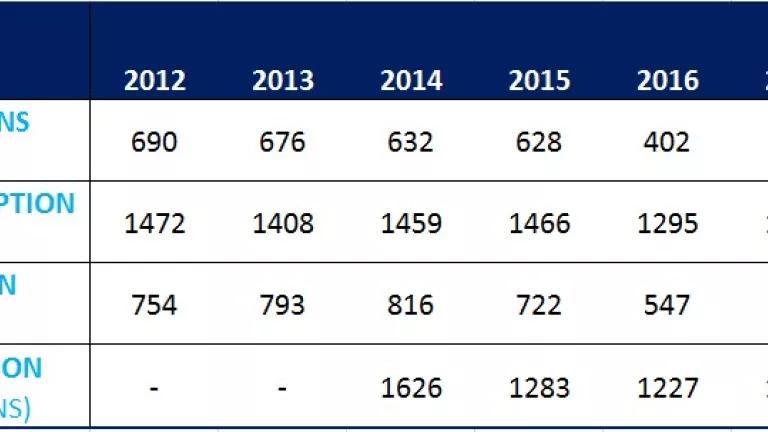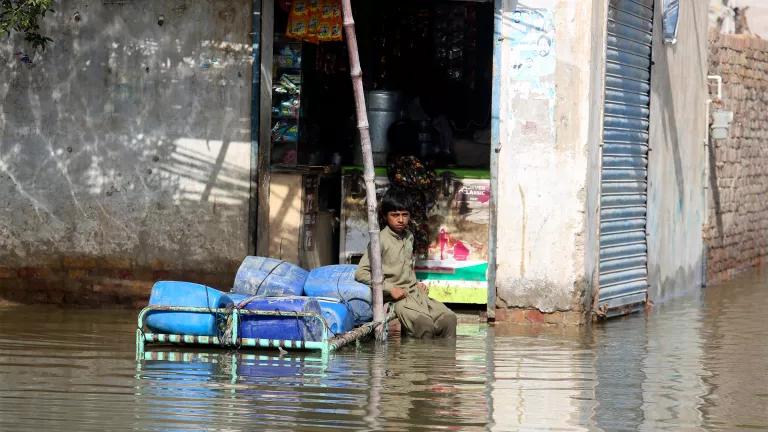Lost in Transmission: World’s Biggest Machine Needs Update
America’s electricity grid is an impressive machine, but like other early 20th-century technologies, it’s due for a reboot.

A conventional aluminum conductor steel-reinforced cable (left) and a high-capacity, low-sag aluminum conductor composite core cable with light-weight composite core and compact trapezoidal aluminum strands (right)
Dave Bryant, CC BY-SA 3.0, via Wikimedia Commons
Coauthored by Katherine Worden, Legal Intern, Stanford Law School.
According to the U.S. Department of Energy (DOE), America’s grid carries electricity from more than 7,700 power plants across 707,000 miles of high-voltage lines, and through millions of miles of low-voltage lines and transformers to millions of customers. It’s an impressive machine, but like other early 20th-century technologies, it’s due for a reboot. Hundreds of billions of kilowatt-hours of electricity are being lost en route to our homes and businesses every year but fortunately, solutions are available.
The U.S. grid loses about 5 percent of all the electricity generated through transmission and distribution—enough to power all seven Central American countries four times. Separately, grid congestion, like traffic congestion, leads to waste and costs consumers approximately $6 billion annually in higher energy bills. At the same time, many transmission lines are underused, even at peak hours.
However, there are ways to improve grid efficiency. Advanced transmission technologies can help optimize how electricity moves through the system, much like real-time navigation apps are helping drivers negotiate congested roads. Newer technologies can also reduce electricity lost during transmission, saving consumers money, cutting pollution by reducing the amount of electricity that needs to be generated, and helping more emissions-free energy into our grid.
We can improve the efficiency of the grid's component parts
One problem is that utilities are continuing to build transmission with old-technology wires that dissipate away too much energy (which is lost as heat radiated into the air). But the are modern wires available today that use carbon fiber cores and pack conducting metal more closely together, making them lighter, stronger and more efficient.
In Texas, these new conductors, installed over 240 miles of transmission, have cut electricity losses by 40 percent and nearly doubled the carrying capacity of the transmission lines. While the modern wires cost more, the energy savings more than paid for them—consumers saved an estimated $30 million in the first year alone from lower line losses, and cut the same amount of carbon pollution emitted from the tailpipes of 34,000 cars annually.
Access to better information can help manage the grid more efficiently
Advanced monitoring technologies, like synchrophasor technologies, provide real-time information across the grid. Synchrophasors are synchronized measurements of voltage, current, and frequency at various locations across the grid. They can thus help improve grid reliability, reduce costs, facilitate renewables integration, and help with grid planning and investment decisions.
In Kansas, where about 36 percent of the state’s electricity comes from wind, grid operators are using dynamic line ratings (or limits) enabled by monitoring the lines’ ambient conditions to add line capacity. Cooler lines can safely carry more electricity, warmer lines less, but lacking real-time information, transmission lines are assigned a fixed limit on the amount of electricity they can carry. Remote monitoring can help integrate more wind energy into the grid because line limits can be increased to reflect the cooling effect of wind. In doing so, less wind energy would have to be dialed down (or curtailed) due to inadequate transmission.
Newer technology can help direct flow of electricity to better use grid capacity
Technologies that direct electricity away from overloaded wires and onto underused ones can reduce congestion on the lines to get more capacity out of existing infrastructure, thus reducing renewable energy generation curtailments. Transmission topology optimization uses software and existing high-voltage circuit breakers to reroute power flow around congested or overloaded transmission elements. This “line switching” can reduce renewable energy curtailment by up to 40 percent. Similarly, power flow control technology (devices that redirect power from overloaded to underused lines) can help incorporate more renewable energy into the existing grid at a fraction of the cost of building new grid capacity.
Incentives should be aligned with improving efficiency and encouraging innovation
For decades, the operators and regulators of our electric grid have ensured its reliability—which is critically important—by staying with the tried and true. But reliability does not have to come at the expense of innovation, and innovation can improve reliability. As our climate continues to warm, extreme storms and flooding increasingly threaten the electricity transmission and distribution systems. Newer transmission technologies can help address the causes and impacts of climate change.
There are a number of things federal and state regulators, grid operators, utilities, and legislatures can do to encourage modernizing our grid—and reducing costs and pollution.
Investment incentives: The Federal Energy Regulatory Commission (FERC) regulates how transmission utilities make money, which usually means that utilities recover from their customers a percentage of how much they’ve spent on capital investments like transmission buildout. (This is known as cost-of-service regulation.) Thus, the more utilities spend on qualifying investments, the more money they make. The Energy Policy Act of 2005 required FERC to establish incentives for certain qualifying transmission projects to encourage the deployment of advanced transmission technologies. While FERC created such incentives in Order 679 and initially approved dozens of applications, these incentives were largely focused on grid expansion and less on optimizing the existing grid.
Although FERC has since taken a much more restrictive approach after revisiting the incentive issue, it has not established a mechanism appropriately encouraging the technologies discussed here. FERC should consider more refinements to ensure that proven, cost-effective means of improving the efficiency of existing infrastructure are appropriately rewarded.
Efficiency standards: In 2015 alone, the DOE energy efficiency standards, covering more than 60 categories of products, reduced the national energy bill by about $80 billion. But distribution transformers are currently the only type of transmission technology covered by DOE’s appliance and equipment standards. Expanding the scope of DOE standards (which cover appliances like air conditioners and furnaces) may be one way to improve efficiency, but standards likely would have to account for regional differences in climate and natural disaster challenges, which affect the type of transmission technology best suited for a particular region. Standards would also have to consider how improving the efficiency of one component of the interconnected grid would improve the overall efficiency the system.
A system-wide standard that looks beyond individual parts of the transmission system could provide the appropriate incentive and flexibility for a transmission-owning utility to seek out its least efficient components and find the most cost-effective solutions to meet the standard. To limit air pollution, for example, the U.S. Environmental Protection Agency) sets emissions standards for power plants and vehicles instead of requiring specific emission-control technologies. This flexibility can encourage innovation as well as technology adoption.
Changing the regulatory system: The current regulatory process should do more to encourage utilities to adopt modern and efficient transmission technologies. One solution is for FERC, which oversees the interstate movement of electricity, and state public utility commissions to consider the benefits to consumers that more efficient technologies could offer in transmission rate proceedings and siting approvals. Regulators could require utilities seeking to build new infrastructure to demonstrate that they’ve at least considered cost-effective and more efficient technologies. Another is to change the system to directly reward utilities for achieving pre-defined outcomes, such as efficiency or affordability, rather than allowing them to recover whatever costs they incur. Known as performance-based regulation, this kind of system has already been implemented in the United Kingdom as well as several states, including New York as part of its Reforming the Energy Vision initiative.
We have the technologies to make our existing grid stronger, cleaner, and more efficient. With a regulatory structure that allows utilities and grid operators to embrace these improvements, modern transmission technologies can help bring more clean energy to more people, reliably and cost-effectively, today.



